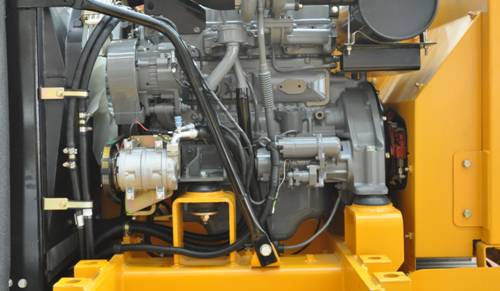1. The hydraulic cylinder and surrounding environment should be clean. The fuel tank must be sealed to prevent contamination. Pipelines and fuel tanks should be cleaned to prevent falling iron oxide scale and other debris. Use lint-free cloth or special paper for cleaning. Twine and adhesives cannot be used as sealing materials. Hydraulic oil should be used according to the design requirements, and attention should be paid to changes in oil temperature and oil pressure. When no-load, unscrew the exhaust bolt to exhaust.
2. There should be no slack in piping links.
3. The base of the hydraulic cylinder must have sufficient rigidity, otherwise the cylinder barrel will arch upward when pressurized, causing the piston rod to bend.
4. Before installing the hydraulic cylinder into the system, compare the parameters on the hydraulic cylinder plate with the parameters when ordering.
5. For a mobile cylinder with a fixed foot base, the central axis should be concentric with the center line of the load force to avoid causing lateral forces, which can easily cause seal wear and piston damage. When installing the hydraulic cylinder of a moving object, keep the direction of movement of the cylinder and the moving object on the guide rail surface parallel, and the parallelism is generally not greater than 0.05mm/m.
6. Install the sealing gland screw of the hydraulic cylinder block, and tighten it to ensure that the piston can move flexibly throughout the entire stroke without any obstruction or uneven weight. If the screw is tightened too much, it will increase resistance and accelerate wear; if it is too loose, it will cause oil leakage.
7. For hydraulic cylinders with exhaust valves or exhaust plugs, the exhaust valve or exhaust plug must be installed at the highest point to eliminate air.
8. The axial ends of the cylinder cannot be fixed, and one end must remain floating to prevent the influence of thermal expansion. Due to factors such as hydraulic pressure and thermal expansion, the cylinder expands and contracts axially. If both ends of the cylinder are fixed, it will cause deformation of various parts of the cylinder.
9. The clearance between the guide sleeve and the piston rod must meet the requirements.
10. Pay attention to the parallelism and straightness of the cylinder and the guide rail. The deviation should be within 0.1 mm/full length. If the total length of the busbar on the hydraulic cylinder is out of tolerance, the bottom surface of the bracket of the hydraulic cylinder or the contact surface of the machine tool should be scraped to meet the requirements; if the side busbar is out of tolerance, loosen the hydraulic cylinder and fixing screws, remove the positioning lock, and correct The accuracy of its side busbar.
11. When disassembling the hydraulic cylinder, be careful not to damage the threads on the top of the piston rod, the cylinder mouth threads and the surface of the piston rod. It is strictly forbidden to hammer the surface of the cylinder barrel and piston. If the surface of the cylinder bore and piston is damaged, sandpaper is not allowed to be polished. It must be carefully ground with fine oil stone. 1. The hydraulic cylinder and the surrounding environment should be clean. The fuel tank must be sealed to prevent contamination. Pipelines and fuel tanks should be cleaned to prevent falling iron oxide scale and other debris. Use lint-free cloth or special paper for cleaning. Twine and adhesives cannot be used as sealing materials. Hydraulic oil should be used according to the design requirements, and attention should be paid to changes in oil temperature and oil pressure. When no-load, unscrew the exhaust bolt to exhaust.
If you need to purchase hydraulic cylinders or other accessories, please contact us. CCMIE-your trustworthy accessories supplier!
Post time: Mar-26-2024

